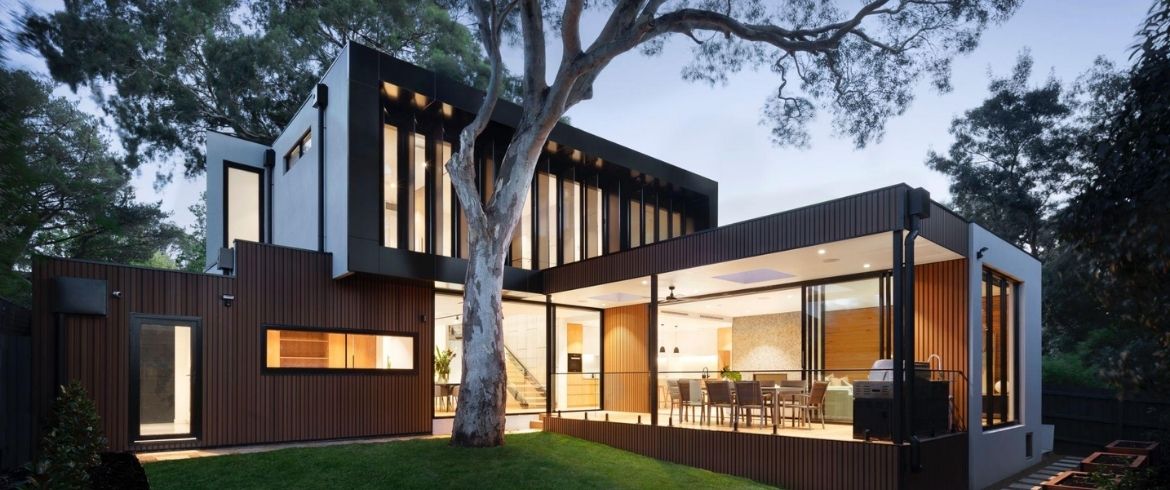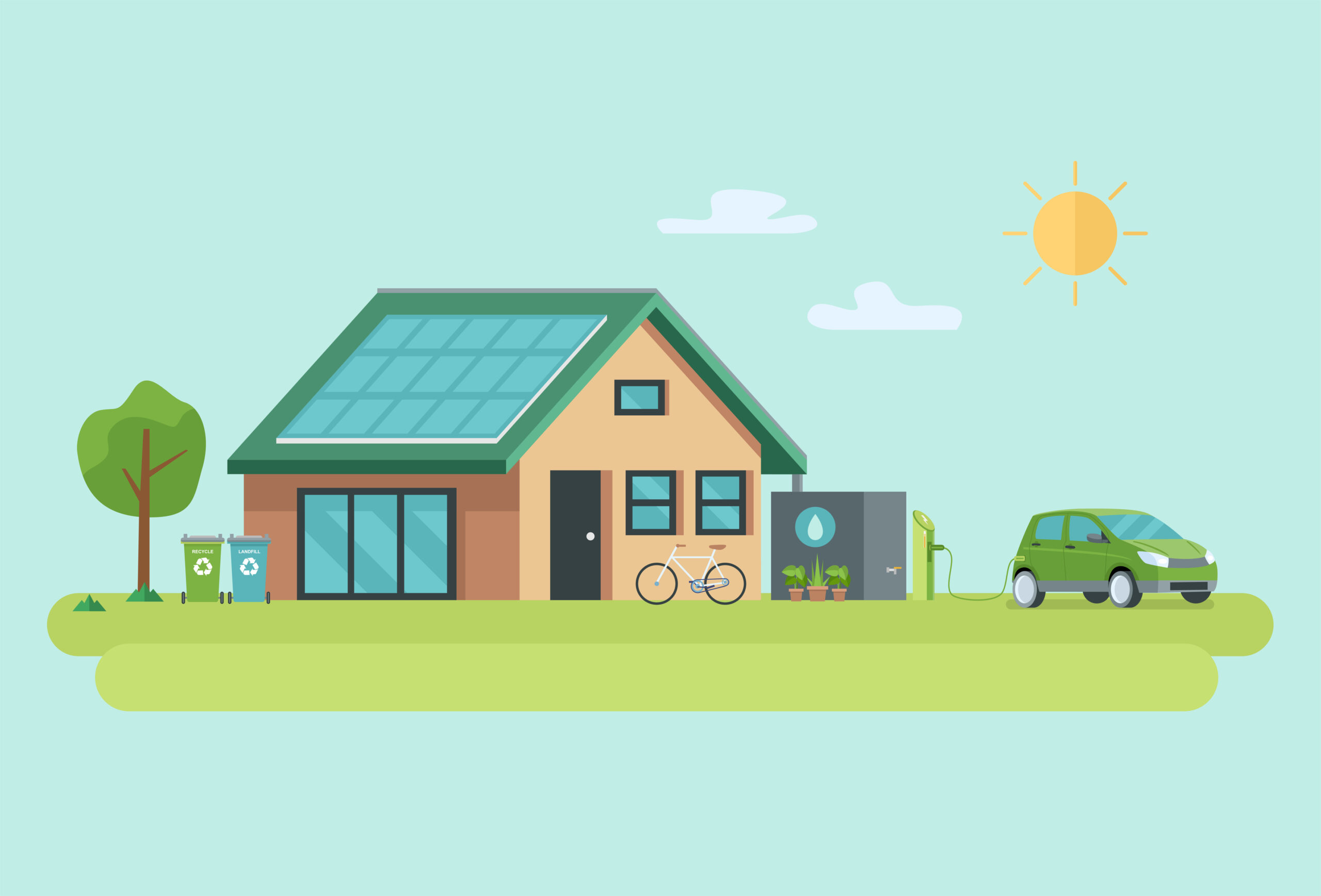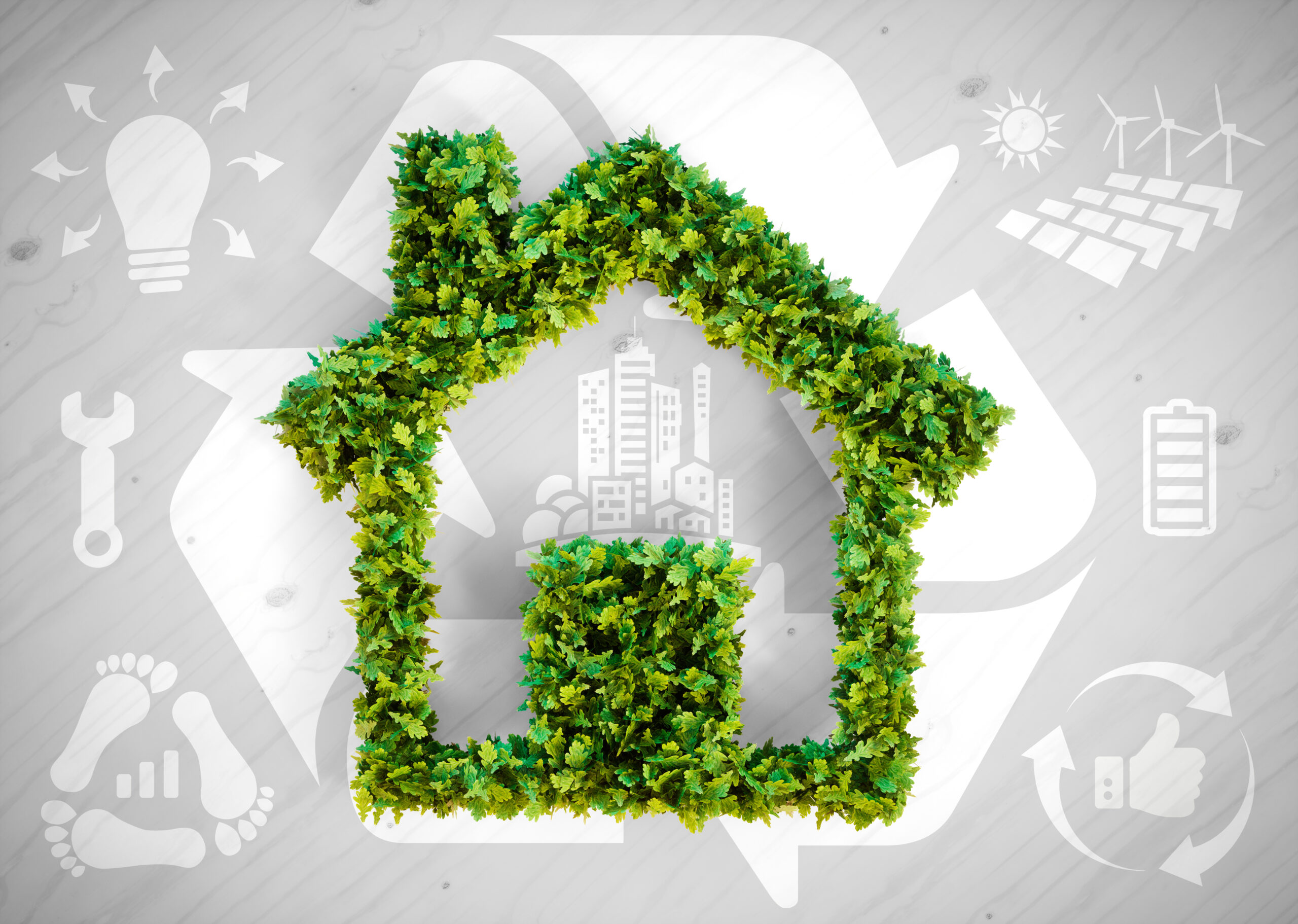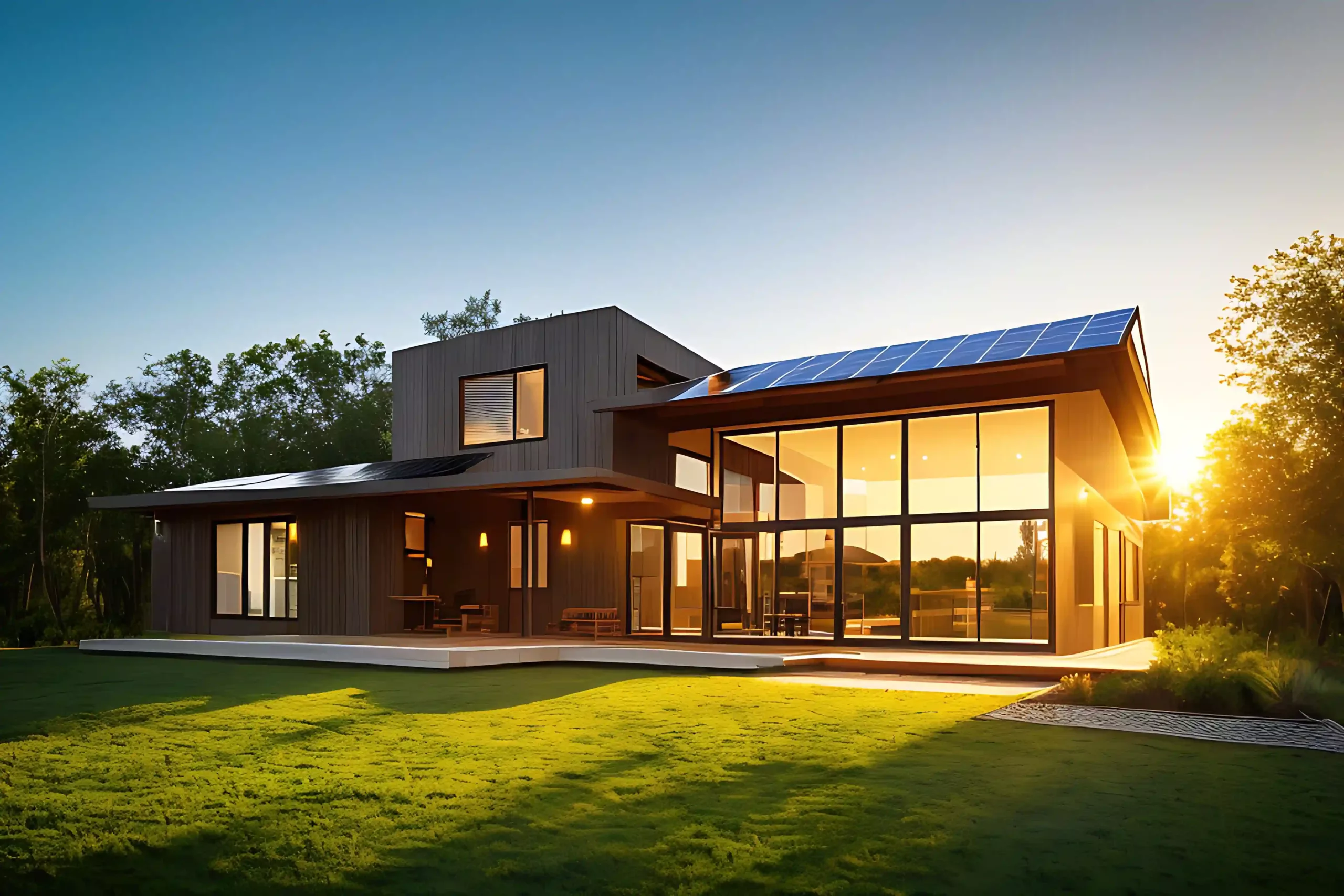As the world grapples with environmental challenges and the need for sustainable living becomes increasingly urgent, designing homes that minimize their ecological footprint has become a top priority. Sustainable home design integrates innovative strategies and practices that aim to reduce energy consumption, conserve water, optimize resource usage, and promote a healthy living environment.
Opting for sustainable home architecture offers numerous benefits beyond environmental stewardship. By implementing eco-friendly practices and technologies, homeowners can reduce their energy bills, improve indoor air quality, enhance comfort, and create a healthier living environment for themselves and their families. Sustainable homes are designed to be resource-efficient, incorporating features that not only save money but also increase the long-term value of the property. Moreover, adopting sustainable design principles allows homeowners to actively contribute to global efforts to combat climate change and preserve the planet for future generations.
Strategies for a Sustainable Home Design
Efficient Heating and Cooling
Efficient heating and cooling systems play a crucial role in sustainable home design. Sustainable home buildersprioritize the use of energy-efficient HVAC systems to reduce energy consumption and minimize environmental impact. This includes selecting high-efficiency furnaces, heat pumps, and air conditioners that are designed to optimize performance while using less energy.
Proper insulation and sealing air leaks are important steps to prevent heat loss during the winter and minimize heat gain during the summer. By working with environmentally conscious designers, homeowners can benefit from their expertise in selecting the most efficient heating and cooling systems for their homes.
Implementation of Lighting
It is recommended to use LED bulbs, which consume significantly less energy compared to traditional incandescent or fluorescent lighting. LED lighting not only reduces energy consumption but also has a longer lifespan, resulting in fewer replacements and less waste.
To further optimize lighting efficiency, incorporating natural light sources through well-planned window placement and skylights can minimize the need for artificial lighting during daylight hours. By prioritizing energy-efficient lighting in their eco-friendly home designs, homeowners can reduce energy usage and contribute to a greener environment.
Landscaping and Outdoor Spaces
When designing a sustainable home, it’s important to consider the landscaping and outdoor spaces surrounding the property. Designers emphasize the use of native plants, which are adapted to the local climate and require less water and maintenance. By incorporating native plants in the landscaping design, homeowners can conserve water and reduce the need for chemical fertilizers or pesticides. Creating biodiversity-rich landscapes with a variety of plant species also promotes a healthy ecosystem and attracts beneficial wildlife such as pollinators.
Sustainable design companies recommend the use of permeable surfaces such as permeable pavers or gravel to minimize stormwater runoff and allow rainwater to infiltrate the soil naturally. By incorporating sustainable landscaping practices, homeowners can create environmentally friendly outdoor spaces that enhance the overall sustainability of their home.
Lifespan and Durability
When it comes to sustainable home architecture, considering the lifespan and durability of building materials and components is crucial. Sustainable home builders and designers focus on selecting materials that are long-lasting and require minimal maintenance. By choosing durable materials, such as high-quality roofing, siding, and flooring, homeowners can minimize the need for replacements and reduce waste generation over time.
It is often recommended that homeowners incorporate renewable and recyclable materials, such as bamboo flooring or reclaimed wood, which further enhance the eco-friendliness of the home. By prioritizing the lifespan and durability of building materials, sustainable residential architecture aims to create homes that can withstand the test of time while minimizing environmental impact.
Optimize Energy Efficiency
Optimizing energy efficiency is a fundamental aspect of sustainable home design. A green home’s design emphasizes reducing energy consumption by incorporating energy-efficient appliances, windows, and insulation. Sustainable home builders recommend selecting ENERGY STAR-certified appliances, which meet strict energy efficiency guidelines and significantly reduce energy usage.
Well-insulated windows and doors, along with proper insulation in walls and attics, help maintain a comfortable indoor temperature and reduce the need for excessive heating or cooling. Implementing smart thermostats that can learn and adjust to homeowners’ preferences can further optimize energy usage by efficiently controlling heating and cooling systems. By prioritizing energy efficiency throughout the design and construction process, eco-friendly home builders aim to create sustainable homes that are comfortable, cost-effective, and environmentally responsible.
Plan with Passive Design Principles
Passive design principles play a crucial role in sustainable home architecture by harnessing natural elements to minimize energy consumption. The best green home designer, such as the one from Sustainable Design, focuses on strategic planning to optimize passive design elements such as solar orientation, natural ventilation, and shading. By aligning the home’s layout and window placement with the path of the sun, homeowners can maximize natural lighting and reduce the need for artificial lighting during the day.
Incorporating features like overhangs, shading devices, or deciduous trees can help regulate solar heat gain and reduce the demand for cooling systems during the summer. By integrating passive design principles into the overall home design, sustainable home builders create environmentally friendly homes that are comfortable and energy-efficient.
Proper Insulation
Proper insulation is a critical strategy for environment friendly home designs as it helps minimize energy loss and maintain a comfortable indoor environment. Sustainable home builders prioritize the use of high-quality insulation materials, such as cellulose insulation or rigid foam insulation, to reduce heat transfer through walls, roofs, and floors. Effective insulation also helps prevent air leaks, which can significantly impact energy efficiency.
By sealing gaps and cracks, and ensuring proper insulation around doors and windows, homeowners can create a tightly sealed envelope that minimizes air infiltration. This reduces the need for excessive heating and cooling, resulting in lower energy consumption and reduced greenhouse gas emissions. Collaborating with eco-friendly home builders or sustainable design companies ensures the selection and installation of proper insulation materials that align with sustainable residential architecture principles.
Smart Home Technology
Sustainable home builders recommend installing smart thermostats, automated lighting systems, and energy management tools. These advanced technologies enable homeowners to monitor and control their home’s energy usage remotely, optimizing efficiency and reducing waste. By integrating smart home systems, homeowners can create personalized schedules for heating, cooling, and lighting, ensuring energy is only used when necessary.
This technology also provides real-time data on energy consumption, empowering homeowners to make informed decisions about their energy usage. Collaborating with eco-friendly home builders or sustainable design companies can help homeowners select and implement the most suitable smart home technology for their sustainable residential architecture.
Waste Management
Efficient waste management is a crucial aspect of sustainable home design. Builders prioritize the reduction, recycling, and proper disposal of waste materials throughout the construction process. They encourage homeowners to adopt eco-friendly practices such as implementing recycling systems, composting organic waste, and using recycled materials whenever possible. Proper waste management not only minimizes the environmental impact but also reduces the reliance on landfills.
Sustainable design companies often collaborate with local recycling facilities and waste management services to ensure the responsible disposal of construction waste. By incorporating waste management strategies into the design and construction process, sustainable home builders contribute to the creation of environmentally friendly homes.
Water Conservation
Water conservation is an essential strategy in sustainable home design. Various measures are implemented to minimize water consumption. This includes the installation of low-flow fixtures such as faucets, showerheads, and toilets, which significantly reduce water usage without compromising functionality. Sustainable residential architecture also incorporates rainwater harvesting systems to collect and store rainwater for landscape irrigation or non-potable uses.
Additionally, designing a drought-tolerant landscape with native plants reduces the need for excessive watering. Implementing efficient irrigation systems, such as drip irrigation, further maximizes water efficiency. By prioritizing water conservation strategies, eco-friendly homebuilders contribute to the sustainable use of this precious resource.
Use of Sustainable Materials
Choosing sustainable materials is a fundamental principle of sustainable home design. Eco-friendly home buildersemphasize the use of environmentally friendly and renewable materials. This includes selecting materials with low embodied energy, such as reclaimed wood, bamboo, or recycled metal. Sustainable design companies prioritize the use of materials that have been responsibly sourced and certified by recognized sustainability organizations.
Additionally, utilizing materials with a long lifespan and low maintenance requirements reduces waste generation and the need for frequent replacements. By incorporating sustainable materials into the construction and design of homes, eco-friendly home builders contribute to the creation of environmentally responsible and energy-efficient living spaces.
Conclusion
Implementing strategies for a sustainable home design is not only beneficial for the environment but also for homeowners in terms of energy efficiency, cost savings, and overall well-being. By collaborating with sustainable home builders, homeowners can create eco-friendly homes that align with their values and contribute to a greener future.
By prioritizing energy-efficient HVAC systems, homeowners can reduce their energy consumption and minimize their carbon footprint. Proper insulation ensures a tightly sealed envelope, preventing heat loss in the winter and heat gain in the summer. Incorporating sustainable materials, such as reclaimed wood or recycled metal, not only reduces waste but also promotes responsible sourcing and long-term durability. These strategies empower homeowners to reduce energy usage, maximize natural resources, and minimize waste generation.
By embracing sustainable residential architecture and creating environment-friendly home designs, homeowners play a significant role in building a more sustainable future. Sustainable Design is ready to help with anything concerning these green approaches to home design. We are proud to lend a hand to someone in need o





